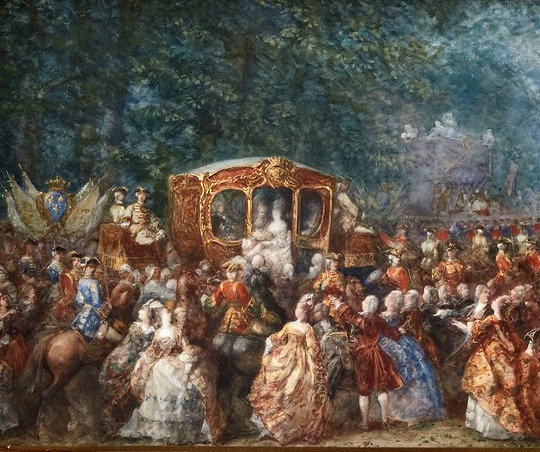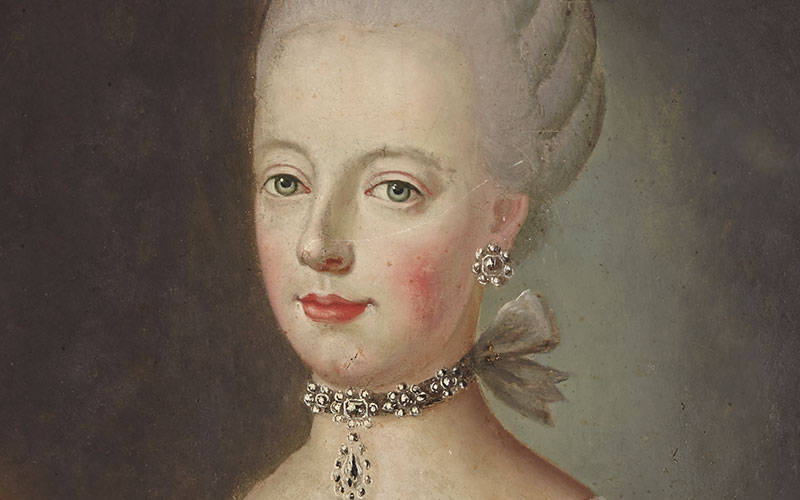| The new Dauphine enters Strasbourg |
 |
| The fourteen-year-old Marie-Antoinette crosses the border into France in May, 1770, clothed in a golden dress. In the background can be seen the pavilion where the new Dauphine surrendered all of her Austrian clothes and possessions and was dressed in French garb. |
 |
| The Dauphine Marie-Antoinette (The portrait in the article is actually not Marie-Antoinette but her sister Archduchess Josefa. |
From Royal Central:
The procession had its afore-planned route, which had been worked out well in advance, to meet the necessary needs of both the practical and the ceremonial. Horses had to be ready at their posts to be changed when the procession met them en route. En route stops meant fireworks, music, triumphal arches, receptions, theatrical performances. In short, it was a justly apt preparation in more ways than one, for the court of Versailles, from where Marie Antoinette would write a mere two months after her arrival, “I put on my rouge… in front of all the whole world.”More HERE.
Bells rang when the procession entered; canons were fired. Invariably for such a huge retinue, it was necessary to find places to stop overnight, which could accommodate the Dauphine as well as her suite, ladies-in-waiting and attendants. Often, monasteries and castles appear to have been chosen, as they represented places equal in size as well as importance which could be deemed worthy of receiving en route both an Austrian Archduchess as well as a future French Queen. As such, the roads had to be made passable, streets improved and food and fine cutlery sourced in enough quantity as would be needed.
Marie Antoinette’s journey would cross much of the Holy Roman Empire, of which her father had been Emperor in his lifetime, her mother being Holy Roman Empress also, albeit by marriage. Crucially, she would then be handed over formally to France as its future Dauphine, but this time in order to ‘become’ fully French, thereafter entering Strasbourg and then her father’s former duchy of Lorraine. Many of the cities and towns through which she passed would count the passing of her procession through them as a high point in their cultural history. (Read more.)
My biography of the Queen, HERE.
Share

















No comments:
Post a Comment